As part of our Basic Sewing Essentials series, today we’re going to explore the different types of cutting tools available in the sewing market today. Don’t just grab any old pair of scissors and start cutting – having the right tools for the job is essential. It will help elevate your sewing project by giving it a more polished and professional look.
Cutting Tools For Sewing
Let’s take a look at the sewing tools you should have handy in your sewing room:
Scissors – They come in all shapes and sizes, but there are a few specific pairs you should keep at the ready:
-
Fabric Shears – Technically, you can buy a pair of scissors almost anywhere. However, the pair you bought at the dollar store to wrap a quick gift aren’t going to cut it when it comes to your fabric cutting needs. Choose a pair of fabric shears from a craft or sewing store – these scissors are specially made to cut fabric and they will give you clean lines instead of frayed or jagged edges.
-
Applique Scissors – These funny-looking scissors are smaller than fabric shears and generally have one curved edge to them. They’re perfect for cutting out appliques or for trimming seams. If you’ve ever accidentally cut through the wrong layer of fabric when trying to trim an applique, you can imagine how useful a pair of applique scissors can be! Read all about them on our guest post from Michelle of Sew Michelle.
-
Small Embroidery Scissors – A pair of small embroidery scissors is easier to use, more lightweight, and better able to fit in tight spaces than a typical pair of fabric shears. Keep embroidery scissors next to your machine to trim threads after stitching seams and to snip those hard-to-reach places. Embroidery scissors generally have very sharp tips, though, so watch out!
-
Electric Scissors – Though every seamstress may not find a use for a heavy-duty pair of electric scissors, if you sew any bulky weight fabrics or materials on a regular basis then they might be just the thing you need. These scissors have powerful blades that can easily cut through fabric and paper in addition to materials like cardboard, leather, and even metal.
- Pinking Shears – Not everyone will have these funny looking scissors in their drawer. The handles are fitted with teeth like blades. Instead of a straight cut in the fabric, these small triangular cuts will help prevent the fabric from fraying.
Rotary Cutting Tools – If you’re a quilter, then these rotary cutting tools are must-haves. Even if you don’t have a passion for patchwork, rotary cutting tools can make quick work of fabric cutting so you can get right down to the business of sewing.
-
Rotary Cutter – A rotary cutter basically looks like a pizza cutter, but it’s made for fabric. Rotary cutters usually have a plastic handle and a retractable, circular blade that screws in and out of the handle. The blades come in a variety of sizes, though the most common are 45mm and 60mm (the size generally comes down to personal preference and the types of items you usually cut, in the end). Be careful – rotary blades are extremely sharp so you should always keep your fingers well away from the blade when cutting (I know someone who once cut through the cord to her ear buds while cutting fabric)!
-
Self-healing Cutting Mat – A rotary cutter won’t be much use to you if you don’t have a cutting mat to go with it. If you try to cut fabric on some other surface the cutter’s blade will likely damage that surface! Self-healing mats come with a grid right on them so you can easily see where to cut your fabric to the desired size. They are available in smaller sizes if you only ever cut small quilting pieces, but a larger mat will be more useful for cutting larger sewing pattern pieces or for taking fabric yardage and cutting it down for smaller pieces.
-
Quilting Ruler – The last tool in the rotary cutting trifecta of must-haves is the quilting ruler. These rulers are generally clear and marked with every dimension you could possibly want in your cutting. They’ll make cutting quilt pieces a breeze, and they’re usually marked with bias lines as well for cutting at an angle. Make a sandwich of your fabric between a quilting ruler and a self-healing mat and slide your rotary cutter along the edge of the fabric to cut your pieces in no time. Technically the ruler isn’t a cutting tool, but you’ll be hard-pressed to get the most out of your rotary cutter without one.
-
Electric Rotary Cutter – If you find that it’s too hard on your hands or arms to use the pressure required for a traditional rotary cutter, there is a motorized option available to you. Be careful – if you thought a regular blade was dangerous, imagine what happens when you electrify it!
Shape Cutting Machines – If you cut a lot of shaped pieces for quilting (or really, any sewing project that uses applique), you might want to consider a quilt cutting machine. Most of these machines use dies that are cut in specific shapes to cut through layers of fabric all at once. Do you want to add hearts to your next Valentine quilt, or pumpkins at Halloween? These machines and their dies will cut specialty shapes for you within minutes. Here are some examples:
-
AccuQuilt GO! Baby – The Accuquilt GO! Baby is a small, portable machine that won’t take up too much space in your sewing area but will deliver big-time results. It will cut through six layers of fabric at one time and will give you perfectly shaped pieces of fabric without all the stress of tracing and cutting by hand.
-
Sizzix Big Shot Pro – The Sizzix Big Shot Pro will cut fabrics or other materials up to 13 inches wide. It has an embossing feature that will help you not only with your sewing projects but with paper crafts, such as card-making, as well. It’s compatible with a variety of accessories for any shape or occasion.
- Brother Scan and Cut– The Brother Scan and Cut will cut fabrics and other materials up to 11.7″ wide. It has over 600+ built-in designs and the ability to scan virtually anything, meaning that no cartridges or PC is required.
Industrial-strength cutting tools – Most home sewists wouldn’t have much of an opportunity – or a need – to use industrial sewing and cutting tools. However, if you ever get a chance to watch a professional factory-style fabric cutter in action, it’s something to see! With these machines, you stack the fabric several inches high and place the pattern on top, then saw through the fabric much like a band saw cuts through wood. These machines require a high level of skill but are essential in production-level sewing.
Armed with some of the tools listed above, you’ll be able to cut your way through any sewing project in a flash! Stay tuned for Cutting Tools Care & Keeping coming up next.
Do you have any tips to share? Have we forgotten your favorite cutting tools? Please share in the comments below – we’d love to hear about it!
Hello! Are you new to The Sewing Loft?
If so, I’m glad you stopped by and hope that something has inspired you to keep your needle moving! Don’t miss a single project and subscribe via email HERE! Bonus- free embroidery pattern with newsletter sign up. Another great way to connect with me is via Facebook, Pinterest, Twitter, Google + or Follow my blog with Bloglovin. I’m looking forward to getting to know you and creating together!
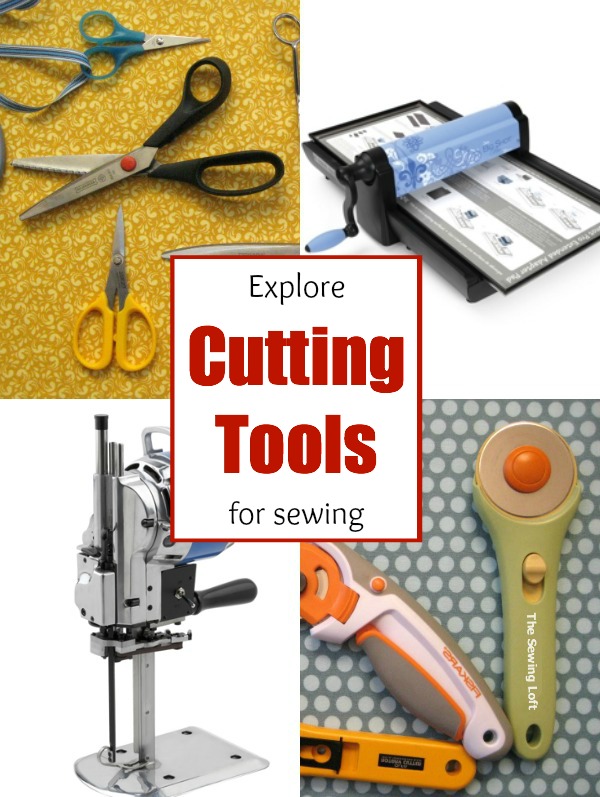
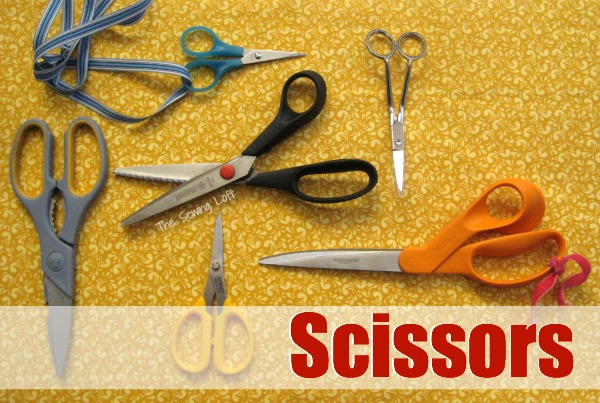
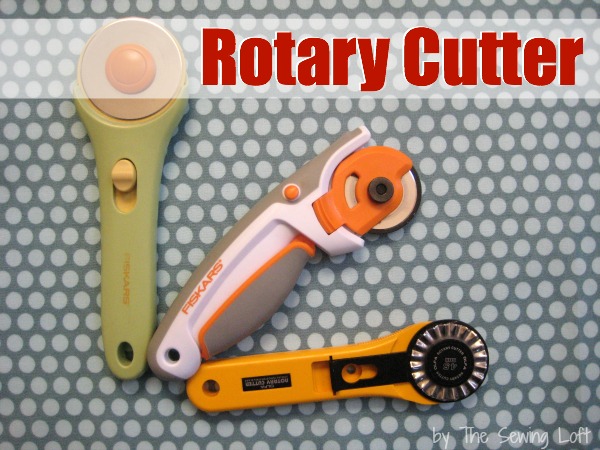
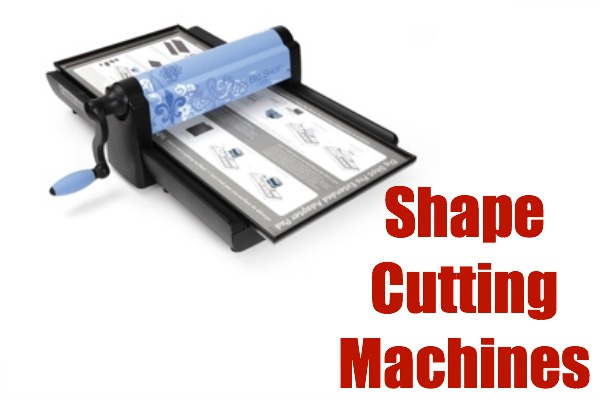
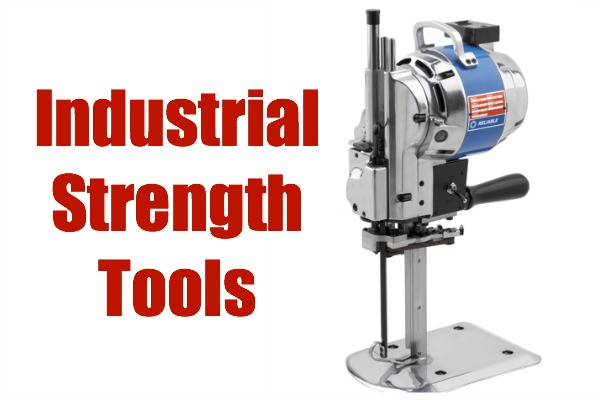

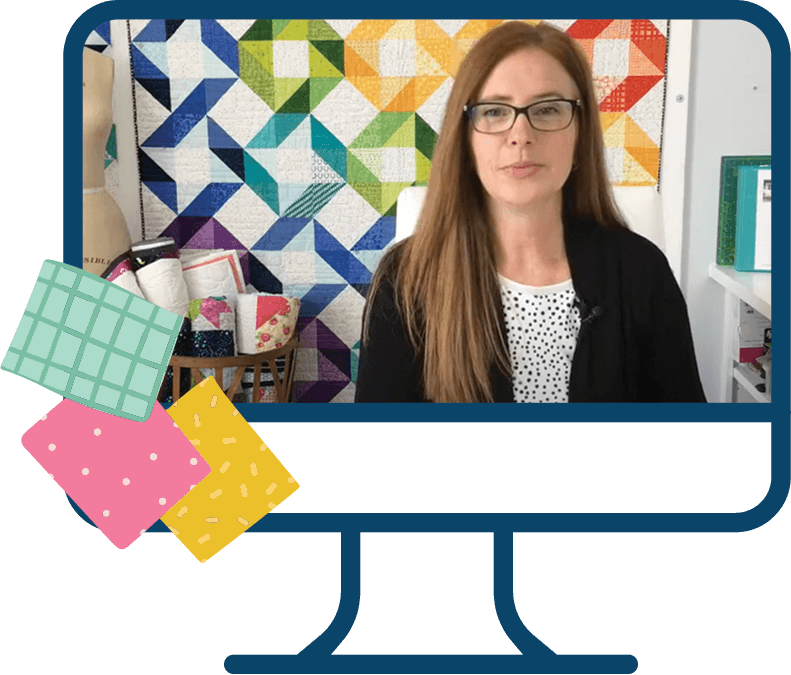

Comments & Reviews
thank you so much dear your article was really helpful